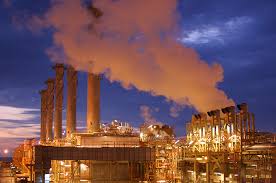
Perlite in oil and petrochemical industry
In last years, perlite has found special place in oil industry. Perlite due to insulation feature and high thermal resistance is used as a factor of oil pipes and tanks insulation against the temperature, cold and sound.
One of main application of perlite in oil industry is absorption of oil pollution and preventing from oil leak to water surface. So it is used as a mixture of expanded perlite with cellulose filaments and waterproof materials.
While adding it to oil, has crated sticky and elastic material that has ability to removing pollutions from seas during the oil dispersion at unexpected events for tankers. Also oil adsorbent perlite is used as oil pollution purgation of coasts and car repair shops.
Perlite in cold and heat tanks
Expanded perlite for insulation is widely used, it can be used from super cold temperature of -240 C° (oxygen tanks, nitrogen, argon, helium and liquid hydrogen) to +1100 C° (furnaces).
Perlite used for insulation has a density of 32 to 240 kg/m3, usually the heat transfer coefficient of perlite is a function of its density. Perlite in oil and gas industries is used as a reliable and effective insulation and coating on refrigeration equipment inside cold tanks "cold boxes" in refineries, petrochemicals and power plants and in much higher volumes in LNG tanks to prevent heat penetration and effect inside the tank.
Perlite consumption in drilling mud
Perlite mixture with drilling mud, including water, clay, pozzolan and etc. is used to facilitate oil, gas water and geothermal well drilling. The resulting perlite cement, which is injected between the drill wall tube and the well wall, prevents the penetration of surrounding water and other pollutions.
The reason for using cement perlite compared to other cement materials such as diatomite, pozzolan and volcanic ash is its lightness.

Insulation in low temperatures
The most important uses of perlite at very low temperatures are in insulation and storage of portable tanks such as tankers to hold liquid oxygen, nitrogen, argon, natural gas and other industrial gases stored in liquid form.
Since the temperature of these liquefied gases varies from -33 C° for ammonia to -269C° for helium, the range of application of perlite in insulation work will be from temperatures below 0 C° to -270 C°.
In application at low temperatures, perlite is used for air distillation and for producing oxygen, nitrogen and other rare gases. Also perlite is used for filling the layer between internal and external walls of liquid transporting and storage tanks or production towers.
Main alternative to perlite at low temperatures is plastic foams such as polyurethane and rock wool. The advantage of perlite over other insulators is that it can be reused after changing the tank. In European countries plastic foams are mostly used, but perlite is still widely used in low temperatures insulation.
Insulation at high temperatures
Perlite insulation is used in the steel and foundry industries such as slag, in molten materials that quickly overflow from caldrons or in molten molds and finally in foundry sand as cushion agent and in the manufacture of fireproof bricks and parts.
Expanded or raw granulated perlite is also poured into caldrons and on molten metals surface. Perlite particles combined with foam and debris on molten materials and slag are easily removed from surface of molten materials. Perlite due to fireproof property which is resistant to 1100 C°, is used in refractory industries for providing fireproof blocks and bricks.





